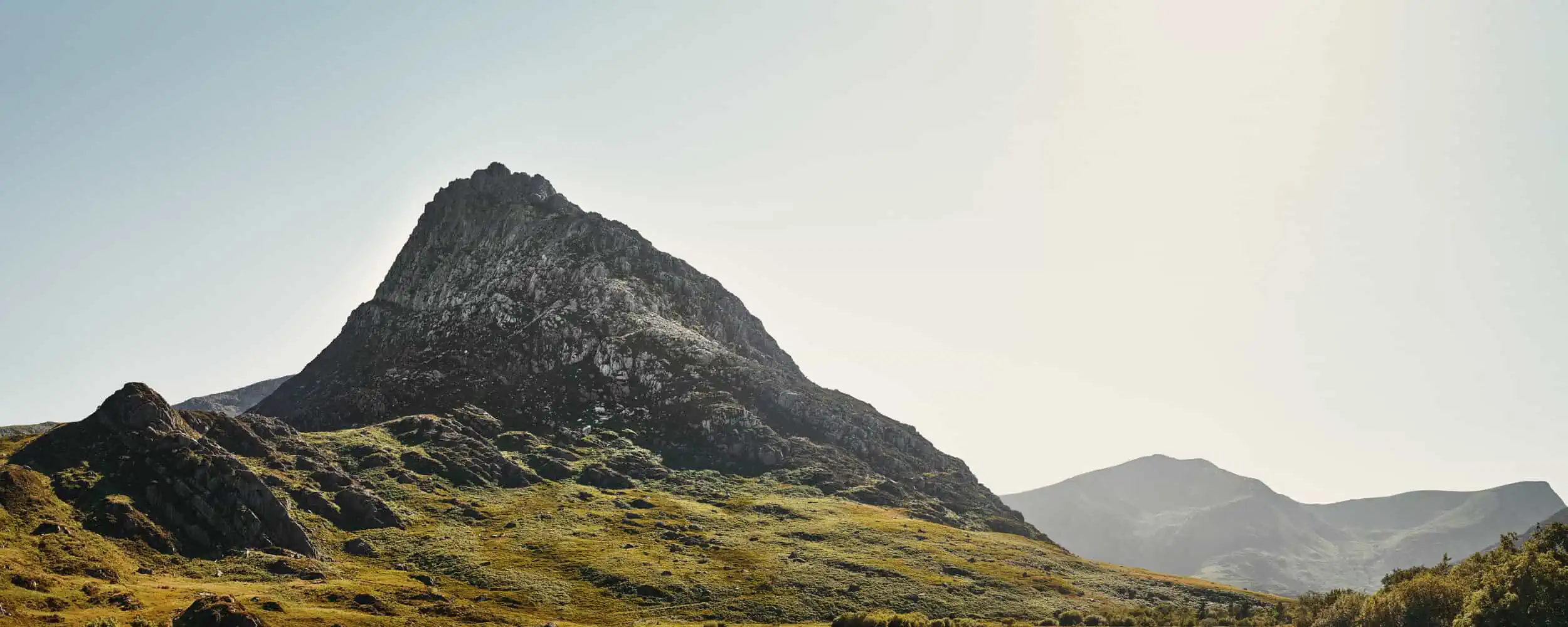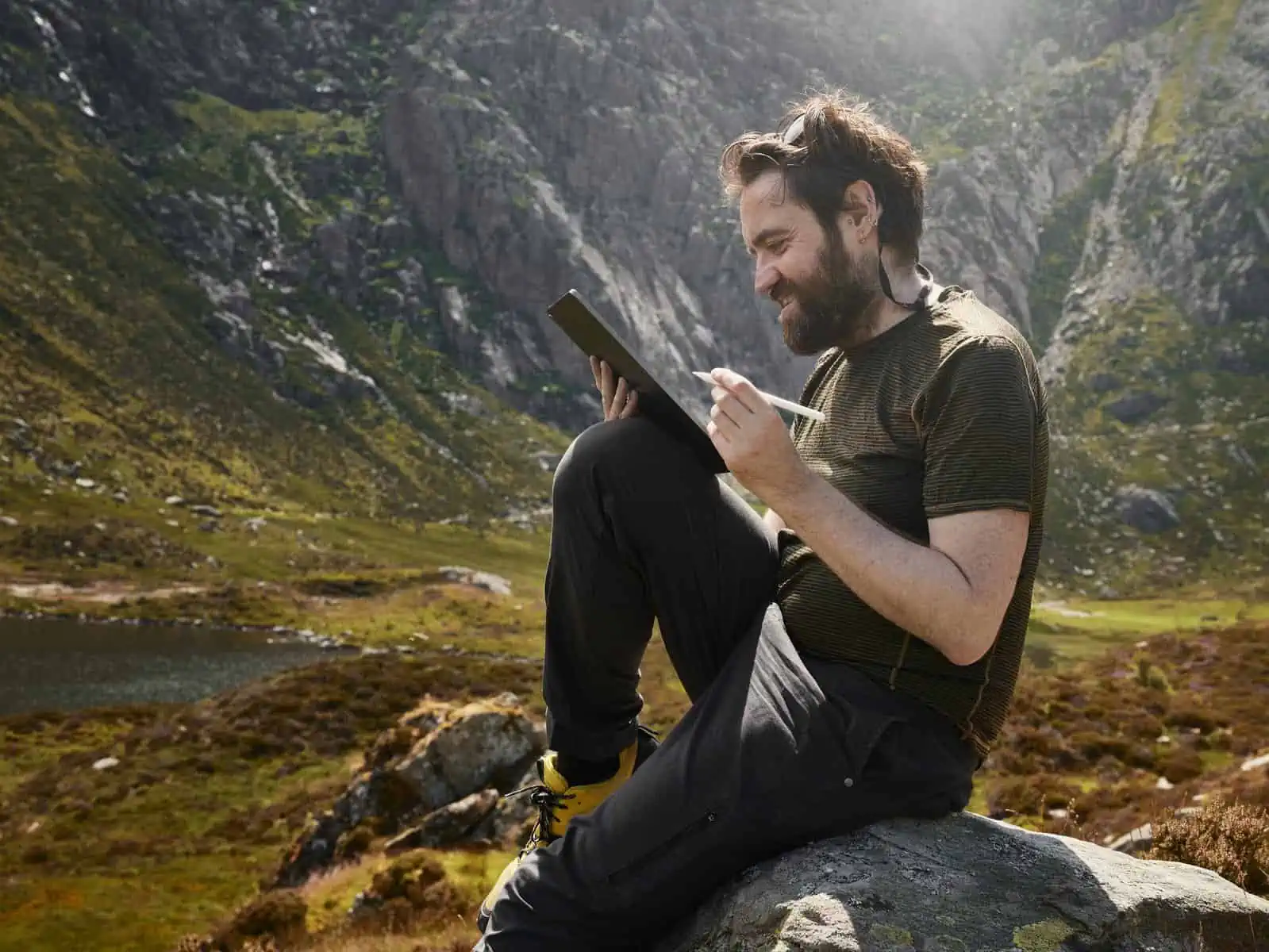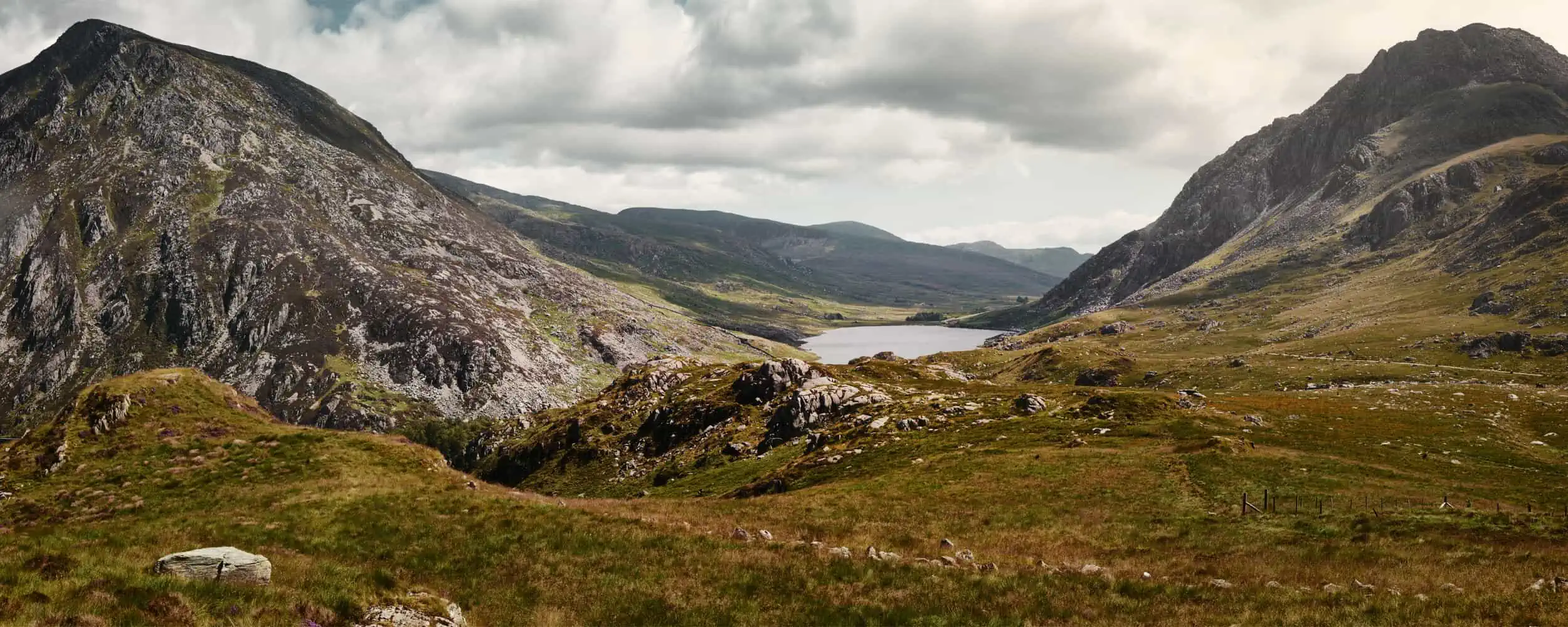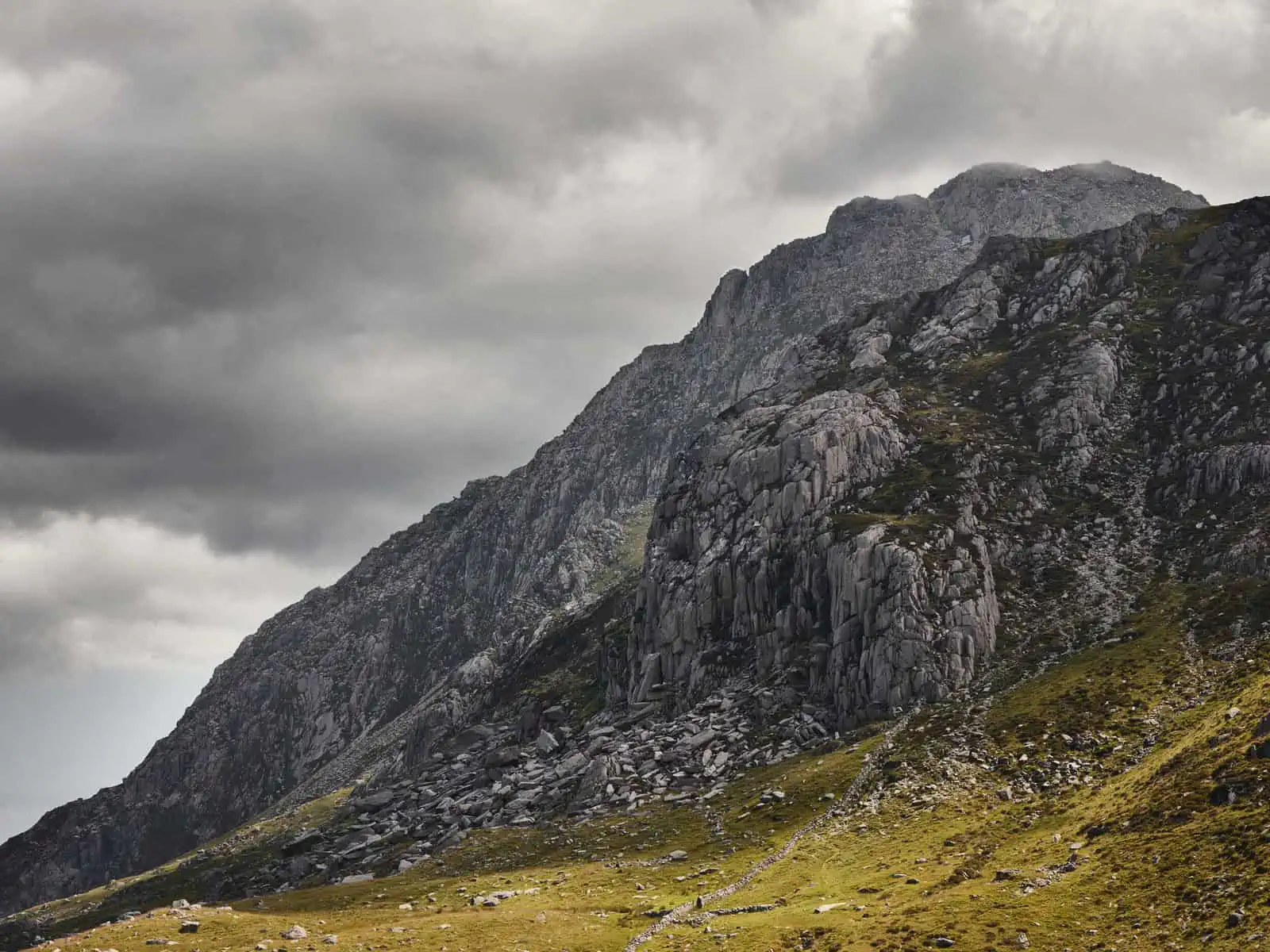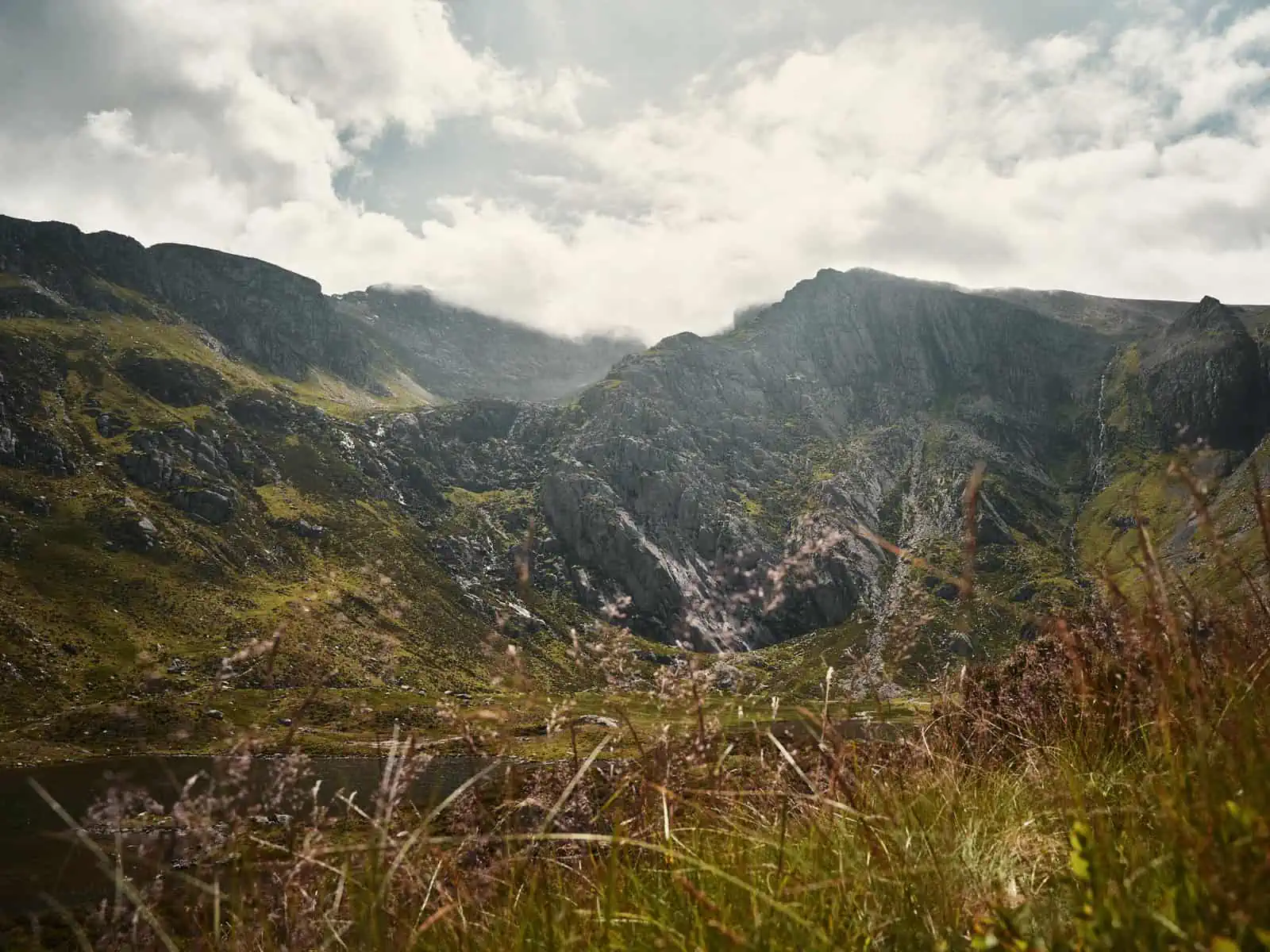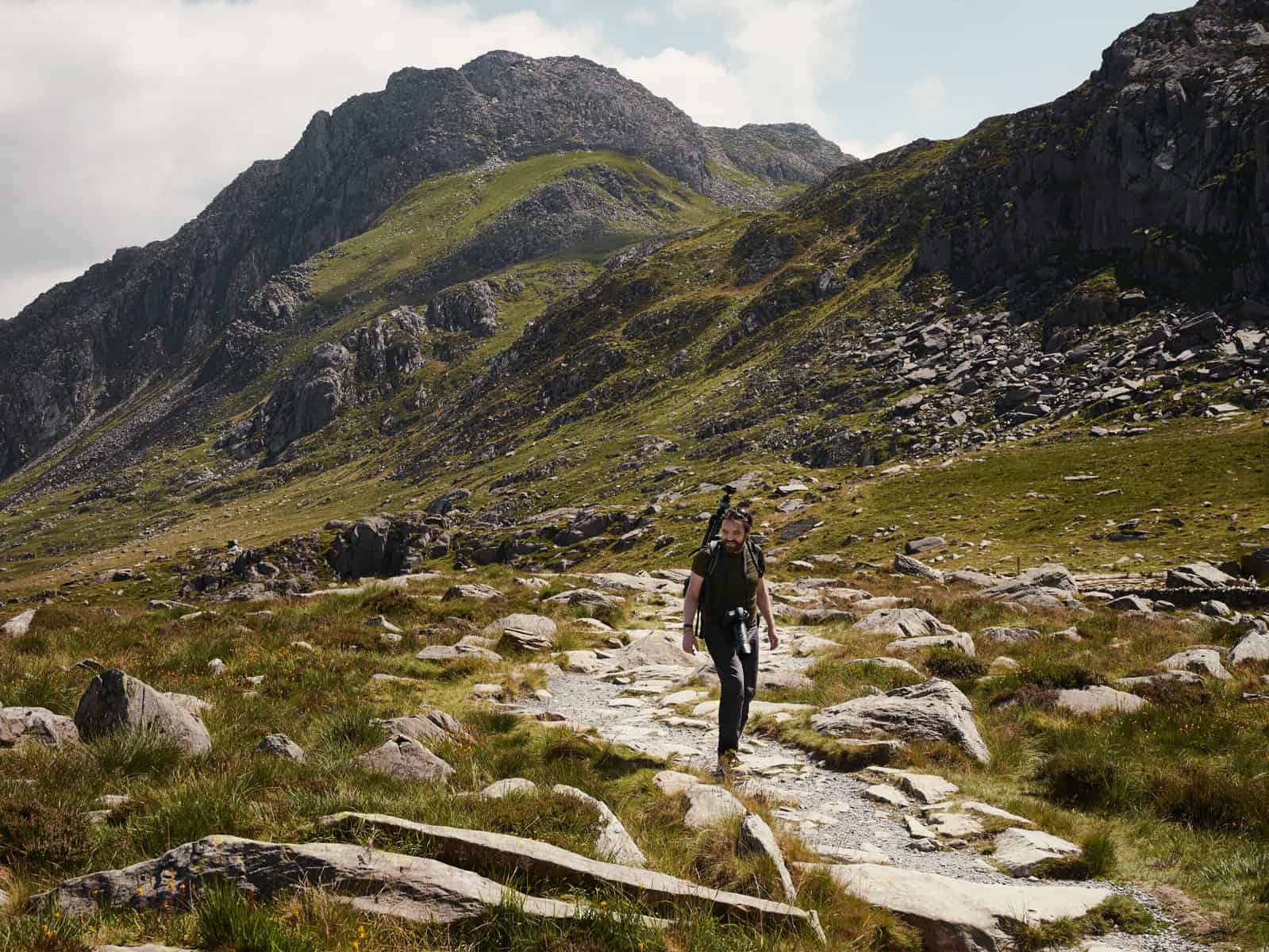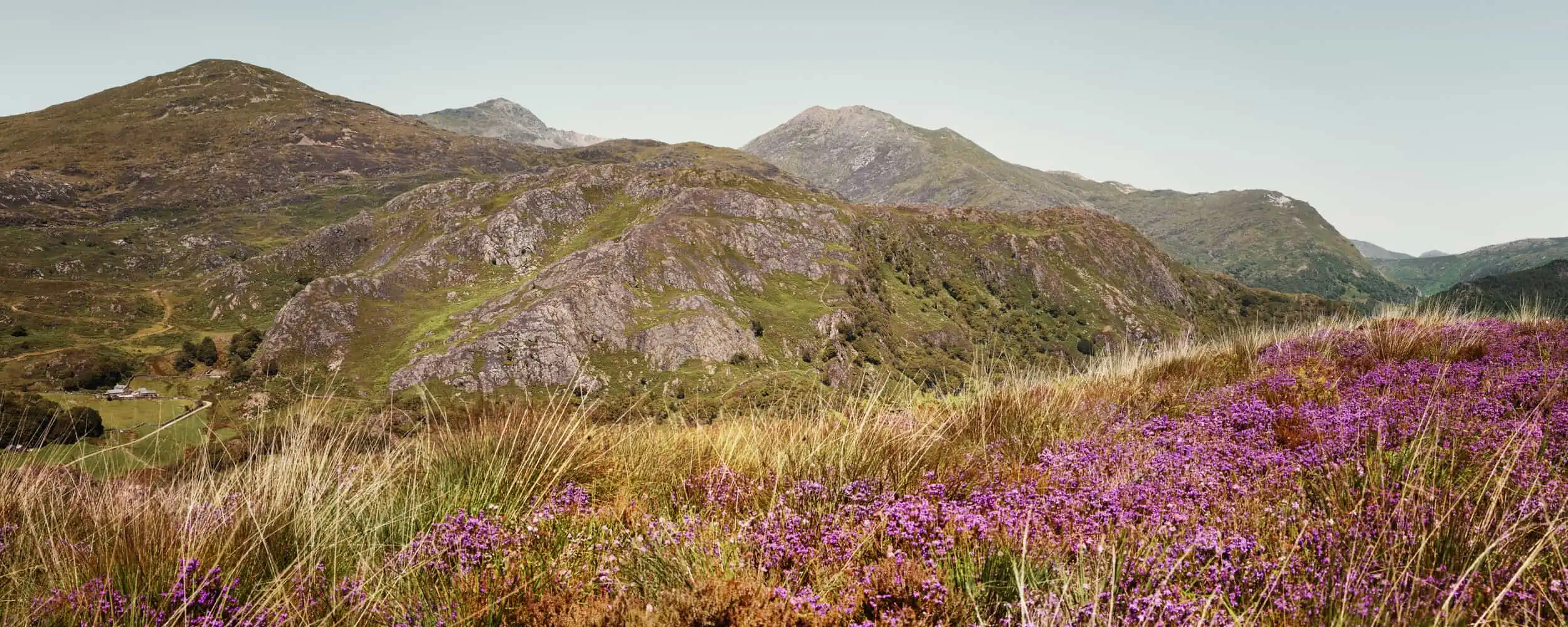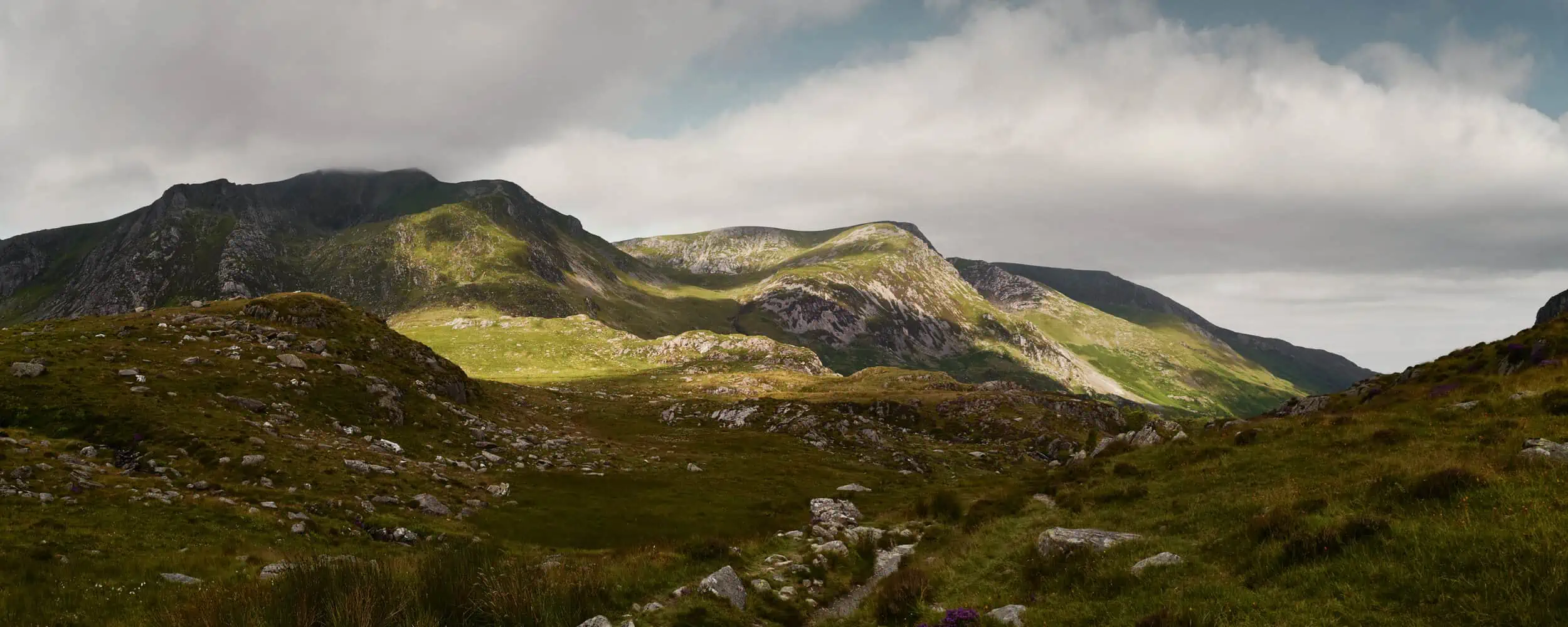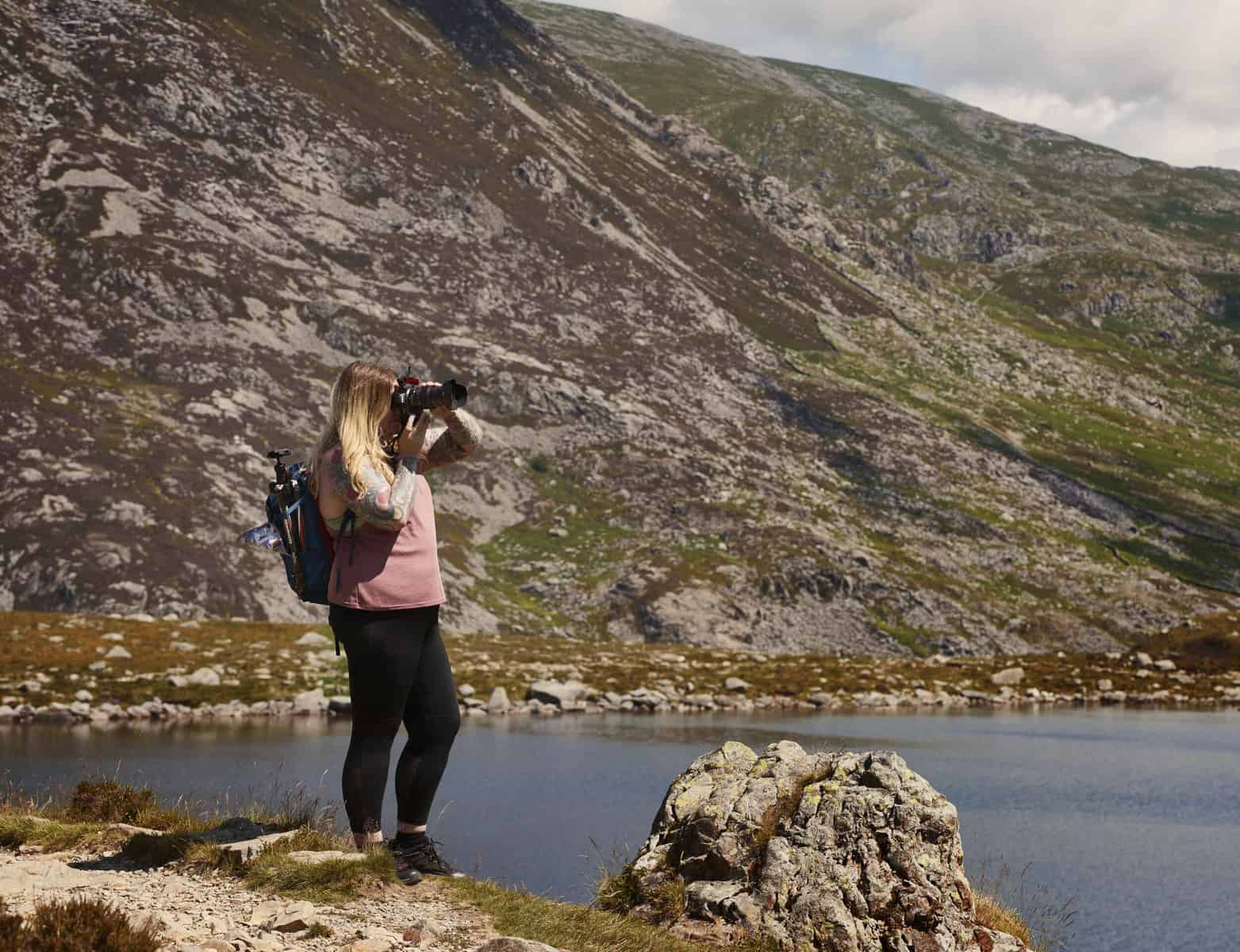This project is in collaboration with Affinity Photo. All opinions are our own. We’re honoured to team up with Affinity Photo, who commissioned to create a new body of work that we love! The pandemic has really impacted our ability to set out on the big international travel projects we were used to, but it’s also given us the opportunity to rediscover and to see with ‘fresh eyes’ some places that we already knew well. For this project, we set out to create a fresh take on the Snowdonia National Park in Wales, working with panoramas – a format we haven’t really used much in the past. It was a great experience – not just to see the park and familiar trails in a new light – but also to develop a new, almost cinematic, way of seeing and composition that the panoramic format dictated. We’ve used Affinity Photo for a number of years – primarily on our iPad on location – but this project also saw us getting better acquainted with the desktop version of the software too. This project was set in Snowdonia National Park – read this article to get inspiration for planning and trip and our suggestions when it comes to the best Snowdonia routes for more off the beaten track hikes.
There’s a lot of preconceptions – myths, almost – about how landscape photography should be done.There’s an idea that a successful landscape image is created through meticulous planning: The photographer has studied the geography of the place and knows exactly what time of day – what time of year, even – they need to be in place, with their camera setup to capture the scenery and light exactly as they want to.There’s nothing wrong with this, and, for sure, many fine images are created this way.There’s just one problem, though: This isn’t how most people experience landscape photography.When we are travelling, we often have a tight schedule to stick to – this is especially so when working on commercial projects.We might just have a few hours to create images in a certain place – and often that’s somewhere we haven’t visited before.Basically, we’ve become used to working with what’s there – but we don’t see this as a problem at all.In fact, we see it as quite the opposite! Our work is not about a literal recording of what we’ve experienced in a place, but rather, it’s about communicating our emotion or how we felt when we visited that place. Much of our work is post-produced and sometimes heavily so, but we’re doing this to help build that sense of emotion in our images and, critically for us, our post-production work always builds on elements that are already present in the original scene rather than adding in something new or creating something from scratch.
ID: A landscape panorama image. In the foreground are rocky hills which are green and grassy. In the mid ground is a rocky, slate grey mountain peak like a sharks fin. In the background are hazy mountain peaks. The sky is bright blue.
We’ve lost track of the number of times we’ve spoken to other photographers who’ve been disappointed that the light at a certain place isn’t exactly like it is in the images of that place they’ve previously seen – it’s like it’s a shame they can’t exactly recreate their reference image!On top of this, we often see how people have tried to fix this in post-production by relighting their images.Whilst there’s certainly a lot of people producing stunning images this way, for us, this is the very opposite of what landscape photography is all about.For us, post-production should work in harmony with the original images – we see it as a process of enhancement and not of change.
We’ve been using Affinity Photo for quite a few years.For a long time, we just used the iPad version of the software and we’ve found it to be a very useful tool when we need to edit files on location.Even if we weren’t using it to produce finished images, we’ve found it very useful as a way to make initial edits on files based on ideas we might have had whilst shooting.There’s no doubt that Affinity Photo on the iPad is a very powerful piece of software and, combined with the power of an iPad Pro, completely capable of everything we’d likely need to do with it, even when working on high res, multi-layer files. However, we still very much prefer to finalise our work in the studio on our calibrated Eizo screens, so we’ve recently added the desktop version of Affinity Photo to our toolkit and can now finish images completely using Affinity family software.
ID: A landscape image. Matt is sat on a rock in a mountainous, slightly out of focus scene working on his iPad and working up an image on Affinity Photo on location. He is wearing yellow shoes, black trousers, green top and is using an iPad with a white Apple Pencil.
Our work was always about exotic travel and big, spectacular locations.Before the pandemic hit, we’d find ourselves heading out on a major international trip almost every month, with smaller trips- both abroad and at home in the UK – in between. That all changed, of course, with lockdown and we suddenly found ourselves spending longer than we had in years at home.Initially, this was crushing for us both: despite knowing well that staying home as instructed was the right thing to do, we couldn’t help but feel like our wings had been clipped and with that, our creativity had been snuffed out.But fortunately, that initial shock didn’t last for long!Within the scope of the limited outdoors time we were allowed early on in the lockdown, we started to rediscover the wild spaces that were close to us – spaces that we’d previously actively ignored in favour of locations we considered more ‘exotic’ or more ‘exciting’.In the end, the lockdown gave us an opportunity to rediscover our connection to what we photograph; to realise that we could still make captivating work in places that, perhaps through over-familiarity, had felt, at best, like we had already photographed them to death or at worst simply uninspiring to us.
Snowdonia, in the North of Wales, is a place we have been visiting together for years – for Matt, the connection is deeper as it’s a place his family holidayed when he was a teenager and his first experience of ‘proper’ mountains.It’s a place we both love very dearly and have a definite connection with and it’s also a place where we’ve made some spectacular images in the past.However, our last few visits to Snowdonia had felt a little too… ‘familiar’.It wasn’t that we didn’t enjoy them, it was just that we had a sense of ‘Been there, done that’ and, whilst we have always made good images in Snowdonia – it isn’t exactly difficult with a landscape that spectacular – we hadn’t made an image there that had really excited us for quite some time.
As lockdown restrictions eased in 2021, we found ourselves able to visit Snowdonia again for the first time in well over a year. We were keen to get back onto the trails we knew well and loved, but we also wondered, given what we had learned about reframing our creative process during lockdown, if we could reapproach Snowdonia with ‘fresh eyes’ and perhaps create some new work there that we could really get excited about!
ID: A landscape image. The scene is bright and it is summer. The foreground contains rocky outcrops with pink mountain flowers. In the mid ground is a layer of green mountain slope. In the background are taller mountains – with summer colours of greens, and grey and mineral colours of red being brought out of the rock. The sky is fully blue, with not a cloud in sight – but is very pale.
ID: A landscape panorama image of mountains. In the foreground are grassy hills, with rocks – this is green and brown. In the mid ground are mountains that are brown and slate grey. In the background are distant hills with a blue cast, a lake and an overcast grey and blue sky.
Snowdonia was just how we remembered it – but a lot busier! With international travel still limited, many people, it seems, are choosing Snowdonia for their staycation this year.We anticipated this and had planned our trip around some of the less popular trails.We’d guessed, for instance, that the trails up Yr Wyddfa (Mt. Snowdon) would be packed and this was proved correct, not just by the overflowing trailhead car parks, but also by the snaking line of people queuing to touch the summit cairn that we glimpsed when photographing the peak from across the valley on a long lens.We based our hiking around routes in the Ogwen Valley and near the towns of Beddgelert and Llanberis that, whilst not as iconic as some of the other areas in the park, would still give us incredible scenery to photograph.We always go to Snowdonia prepared for varied weather – there was one particular visit a few years ago when we packed crampons, ice axes… and shorts (and we made use of all of them on that trip!).This time around, we had something quite unexpected: three days of glorious sunshine and temperatures in the high 20s.This presented challenges in its own right: Hiking in very hot weather is exhausting – especially when carrying what felt like several tons of camera gear – and it’s vital that you are prepared: carry plenty of water – and make sure you drink it – along with salty and sweet hiking snacks.Also make use you are wearing sun block and be sure of your route too.Above all else, don’t be afraid to turn back if you feel you won’t be able to complete the route for whatever reason.
ID: A landscape image. In the foreground of this mountain detail are rocks and greens and sloping hills. This then leads up to slate grey mountains with scree falling down the hill side. The sky is looking overcast, with blue lower down and then transforming into quite dark cloud near the mountain tops.
All of our hiking was done on familiar routes, but the weather transformed the landscape: the clear skies meant we had views through the mountains and even out to sea that we simply hadn’t been aware of before. Put simply, we got more ‘context’ on how the geography of the place fitted together.In turn, this presented new scenes to photograph in places we though we knew well.
The team at Affinity were keen to promote the stitching tools in the Panorama Persona of Affinity Photo and we saw this as a great opportunity to produce something a little different: Most photographers produce panoramas with wide angle lenses, but we choose to work with longer focal lengths.A telephoto panorama might sound like a contradiction in terms, but cinematographers working with anamorphic lenses will be very familiar with this. This approach allowed us to produce wide images which still had the perspective compression inherent of longer lenses that we like in our work.
ID: A landscape image. In the foreground of this mountain scene are out of focus grasses which slightly obstruct our view of a lake which makes up the bottom third of the frame. From the lake up are rocky grey mountains, which as we reach the top of the image, are covered slightly in cloud.
If you’ve shot stitched panoramas before, you’ve no doubt encountered parallax error. This is where one plane of the image stitches together fine but elements that are either closer or further away don’t.The only way to fix this is with retouching – sometimes a lot of retouching! Parallax error isn’t a fault with the stitching software, it’s just a side effect of how optical systems work.However, there is a way we can eliminate this problem: All lenses have what’s called a ‘nodal point’ and, if we pan around this point then there is no parallax error.There’s plenty of info online on how to establish the nodal point for a given lens and, if you’re serious about panoramas, this subject is well worth researching.You can spend a lot of money on a dedicated nodal tripod head, but we just used an inexpensive slider rail and, on the two lenses we used for our panoramas (a 24-70mm and 70-200mm), the nodal point was always somewhere between the camera body and the front of the lens. It’s worth pointing out that even if you don’t set your nodal point exactly, panning around something close to it will still greatly reduce parallax error and thus minimise the time you need to spend fixing joins in post-production.
ID: A landscape image. Matt is walking to the front of the frame on a Rocky Mountain path with rocks and grasses all around him. He is wearing black trousers, yellow shoes, green top and is carrying a camera around his neck and a tripod is visible from his backpack. As the trail heads off behind him, we see rocky mountains above him that are slate grey. The sky is slightly overcast on the left side and is blue on the other.
Affinity Photo on our iPad Pro became a valuable tool in our panoramic workflow.As we were shooting each image in stages, there’s no way to visualise the final image until it is stitched.Especially for early images, we found it very helpful to stitch the panorama on location so we knew we had it ‘in the can’.There’s plenty of different ways to get images from a camera onto an iPad, but we settled on a low-tech but reliable solution: We popped the memory card into a reader and connected it directly to our iPad Pro’s USB-C port, at which point the files are directly accessible from the iPad OS Files App.From here we can copy the files we need to the iPad’s local storage and open them directly in Affinity Photo.The Panorama Persona within Affinity Photo can work directly with raw files and, if all you want to do is to check that the panorama actually works, then this is fine but if you want to start working up a final image, then you’ll likely want to adjust the images through the Develop Persona first.
ID: A landscape panorama image. The scene is bright and it is summer. The foreground contains rocky outcrops with pink mountain flowers. In the mid ground is a layer of green mountain slope. In the background are taller mountains – with summer colours of greens, and grey and mineral colours of red being brought out of the rock. The sky is fully blue, with not a cloud in sight – but is very pale.
Whilst it was certainly helpful to have Affinity Photo running on the iPad with us in the field, we wanted to concentrate on our hiking and photography in this time, so the bulk of the work we did on the iPad came in the evenings when we were back at our apartment.As well as stitching together panoramas, we’d use this time to lay in initial colour and contrast treatments.We could easily have used this setup to produce final images had we been on a tight deadline, but in this case, we knew we’d be finishing the images off in the studio on desktop software, so really, our objective here was to create ‘work in progress’ files that we could complete later.
By the way, if you’re considering using Affinity Photo on an iPad, we’d say that the Apple Pencil or some other stylus should be considered an essential accessory.You can, of course, still use the app purely with touch, but the difference when using a proper stylus is enormous and we’d say that it’s a prerequisite for serious work.
ID: A landscape panorama image of mountains. In the foreground are grassy hills, with rocks – this is green and brown. In the mid ground are mountains that are brown and slate grey. In the background are distant hills with a blue cast and an overcast grey and blue sky. The clouds are creating shadows on the rocks and hills and creating interesting patterns of light and dark on the mountains.
Back in our studio in London, we transferred our work files to our server and were soon ready to pick them up in the desktop version of Affinity Photo.As we mentioned earlier, we have calibrated Eizo screens in the studio, and good as the screens on iPads are, we have come to trust what we see on the studio screens more so we’ll always do final sign off on these monitors if at all possible.As well as making any adjustments to the colour work we did on location – which can range from a few tweaks to close to a full reworking depending on the images – this is also an opportunity to tidy up the files: checking masks, dust spotting, grouping adjustment layers, setting crops and adding in some grain so the files feel a bit more ‘organic’.Working on the desktop version of Affinity Photo also makes it easier to check all the images from the project at once – we can quickly compare images making any final small adjustments to ensure everything sits well together as a set.Finally, we export flattened full resolution RGB TIFFs and medium resolution JPEGs from Affinity Photo which will be added to our image library whilst the layered .afphoto work files are kept on our archive server should we need to revisit the images in the future.
ID: A landscape image. Fay stands pictured full length on the left hand side of the frame with backpack holding a tripod. Fay is taking a picture handheld and wears black shoes, black trousers and a pink top. In the background is a lake and a rocky mountain scene out of focus.
All told, our trip to Snowdonia was very rewarding.We returned with a number of images – and not just panoramas – that we are truly proud of.We think this trip helped us to ‘rediscover’ a place we thought we already knew and, at the end of the day, that’s one of the reasons why we love to make images – they can help us to build connections with the world around us.

